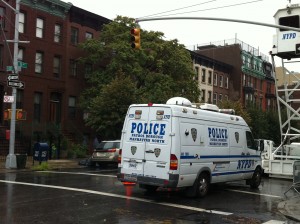Ten days after 18-year-old basketball star Tayshana Murphy was gunned down in Harlem, the two young men allegedly responsible for her murder are in police custody, officials said Wednesday.
As Murphy’s family mourns, her killing has shed light on the steady rise in youth violence and gang related crimes in the area. East Harlem community leaders say the surge could be largely attributed to the lack of jobs, and initiatives to create more opportunities for youth employment are underway.
Harlem hasn’t been spared from the job market’s downward slant. With overall unemployment in the area almost doubling the national rate, the youth labor force – falling between the ages of 16 and 24 – is also feeling the blow. The National Urban League reports that youth unemployment among minorities, who make up a large chunk of East Harlem’s population, hovers around 39 percent.
The high unemployment rate has coincided with the recent spike in youth violence, and community leaders have tied the two trends. Raichelle Thompson, a 21-year-old lifelong East Harlem resident, said youth violence in her neighborhood is at an all time peak. “The younger the group, the more deaths. Kids with guns and no diplomas, it’s really crazy out here,” she said.
At a community board meeting in February, East Harlem police said gang violence was their toughest challenge, and that gang members ranged from 13 to 21 years old. There are about 24 active youth gangs spanning Harlem, according to a DNAinfo report, some even using social websites like YouTube to taunt each other.
Council Member Melissa Mark-Viverito established the El Barrio/East Harlem Youth Task Force in response to the alarming numbers, organizing events on youth violence and putting an emphasis on youth jobs. Congressman Charles Rangel has teamed with other local elected officials and the NUL to gain support for the Urban Jobs Act, which promises to “provide critical resources for non-profit groups to prepare at-risk youth for new employment and educational opportunities.”
With the initiatives freshly under way, it will be a while before we can determine whether they can create more youth jobs and slow down youth violence. Percentage wise, how much do you think the lack of jobs is to blame for the spike in violent youth crimes? What other factors should be addressed to stop the trend in communities like Harlem?

